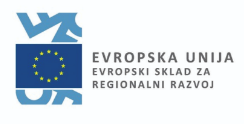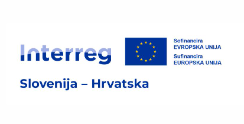Potter Adolf Hašaj from Goričko
Adolf Hašaj from Kuzma, (1941-1993) was master of pottery art and artisanship, his products were recognizable by HA sign on the bottom of the pots.In Prekmurje there were two groups of pottery: the Filovci group and Goričko group. The centre od the Goričko potters was in the village Moščanci, where are allso beginings of the family Hašaj. Tree generacions of poters of family Hašaj: father Štefan, sons Ludvik, Štefan and Ivan and grandson Adolf.Adolf Hašaj from Kuzma stood out among the pottery. He distinguished himself from others by making white glazed pots with hand-painted flower motifs. Some of them would that ̕s why say he is not typical potter of Prekmurje. Indeed, he brought the painting technique and glazing from Austria, Burgenland where he studied and his hand-painted flower motif it is influence of Hungary and Austria. Some of the colleagues potters had the same knowledge but they stayed typical potters of Prekmurje. On the other hand, there is Adolf Hašaj, who used the acquired knowledge of the white glaze and floral painting that he no longer had to sell at fairs. Customers bought clay products right from his workshop at home.After returning home from Burgenland he stop with tradicional glazing and devoted only to make white glazed pots with flower motifs. He no longer bathed clay at home but bought it in Stoob because it was a better base for his white glaze. Brought his knowledge and experience back to Goričko to traditional environment from which he came and that̕ s what attracted and impressed the buyers at the fairs. Insisted on traditional form of making pots but with free spired artist soul was creating somepthing new and unique. Didn̕ t aspire to serial production and the pressure of the company Dom, his soul was artistic. The clay potters were digging clay in their local deposits. The whole family (children and wife) helped with this work. They had a workshop right in the house, in the room, except for Ludvik and Adolf Hašaj from Kuzma, who had a special wooden workshop in the yard. The preparation of the clay was a potters job with a help of wife or children.
The main tools in making pottery are: pottery wheele (šajba); loam mill; paint grinder (siják); a leather cloth (škramec) which helps potter shape the pan; a piece of glass or wood (šprigla) that pulls the container up; sponge for smoothing pots; smaller pieces of wood for making patterns into a raw container; a wire (drout) with which to cut off the pan and set it to dry; a specially shaped board (leis) to lift the pan off the spindle and place it to dry, a hollow piece of molded clay (kukujca) with a goose feather which useses for drawing on the product.The furnace had potters usually in the backyard which were builted by themselves. Group of Goricki potters also burned the black pan, but far less than the Filovci group. They mainly worked glazed (poured) pots, as well as a once-fired (prousto). Most of them so called prousto burned pots used for cooking pork. The poured pan which was once burned, removed from the oven once it was cooled down. The cooled container was wiped and poured inside and outside with a paint. So poured or decorated, they were burned once more in the furnace until the color of the glaze melted; they built and smeared the main entrance. The cooled, once-burnt pan was sprayed with white clay (natural coating) or paint (baize) - these were later spots or with yellow color - these were later brownish-black spots. In the end they use transparent glazing (coating) through which previous colors were visible (Novak 1951: 122–123). At the same time, the colored glazes were not only impermeable but also decoration. Some of the products were also adorned with painted clay and decoration (e.g. 70 percent clay and added color to 30 percent of clay) and were in the end baked. The incised waves or geometric shapes were less often made on a non-burnt container and filled with colored glaze, for example on an amphora and a jug.
Adolf Hašaj learned the incipient painting technique in the Province of Burgenland and used after arriving home in Kuzma. When plastic containers came on the market after 1965, the so-called pottery crisis arise. The potters could no longer sell their products, so a few individuals went to work in Burgenland (Gradiščansko). In 1951, the potters from Goricko wrote to the Ministry of Local Industry in Ljubljana to issue a permit for the sale of products at fairs in Murska Sobota district:“ Potters from Goricko have a lot of clay pots at home which cann̕ t be sold at fairs in Murska Sobota County; they lie and accumulate at home, so we do not know where to go with them, however we still need to pay taxes; have huge overhead costs with the acquisition of firewood, iron and clay, and we are in financial difficulties. In this point we see no prospects for the future. For this reason we ask for permission to sell our products in the county at trade fairs in the future, as do the potters from other district, otherwise we would have to gradually abandon craft pottery - there are only a few of us alredy.Around 1973, the glaze affair began, when the pots were no longer coud be lead glazed, but with the tinny glazing which also reduced the quality of the glaze. The potter, who continued to use lead glazing was punished monetarily; the products were checked by analysis.Literature and Sources:NOVAK, Vilko: Lončarstvo v Prekmurju. Slovenski etnograf, 1951, 111–130.KONESTABO, Nataša: Doneski k podeželskemu lončarstvu v Prekmurju. V: Katalog stalne razstave. Murska Sobota: Pokrajinski muzej Murska Sobota, 1997, 173–186.PŠAJD, Jelka: HA, düša je bila umetniška. Murska Sobota: Pokrajinski muzej Murska Sobota, 2009.








